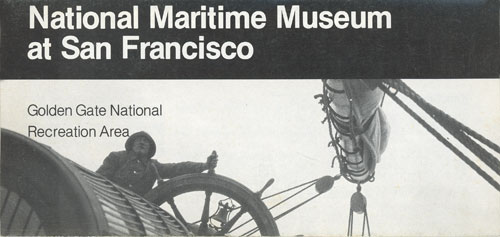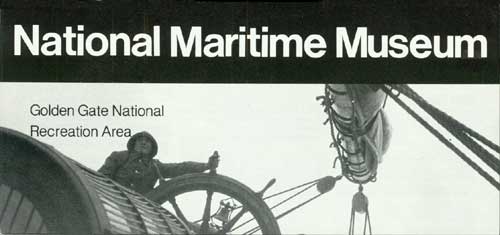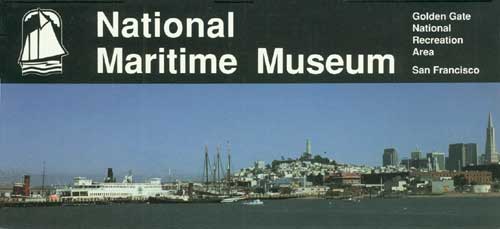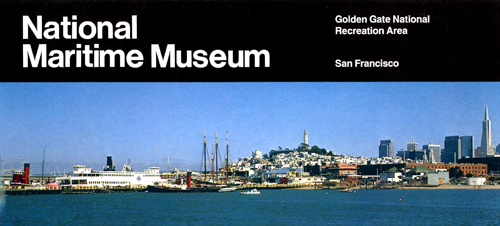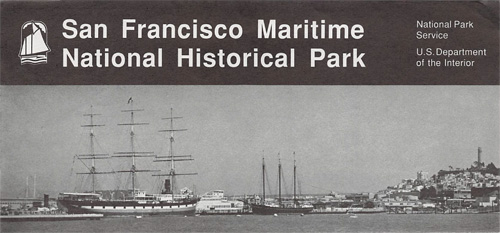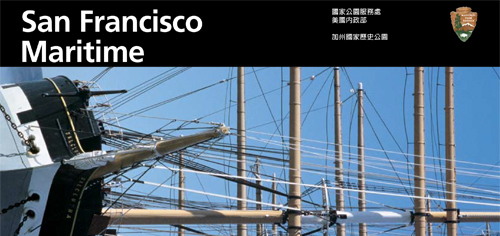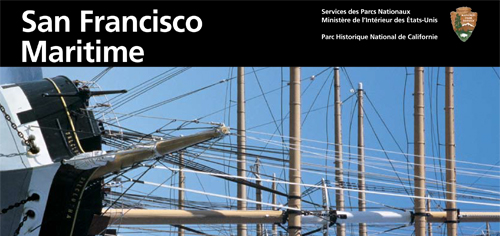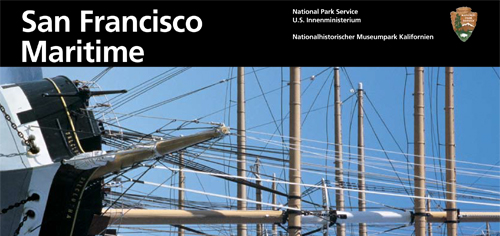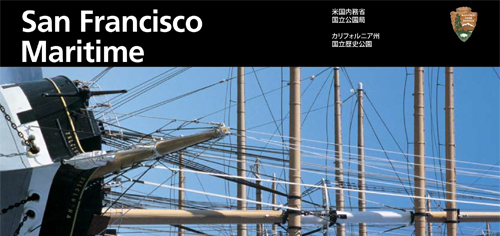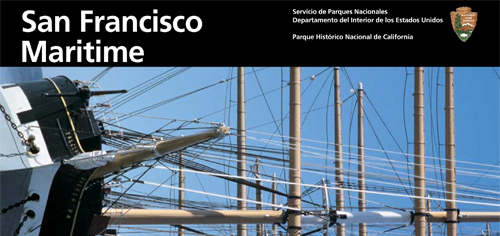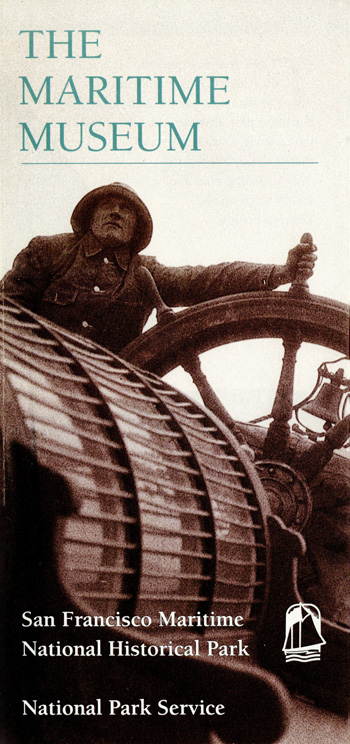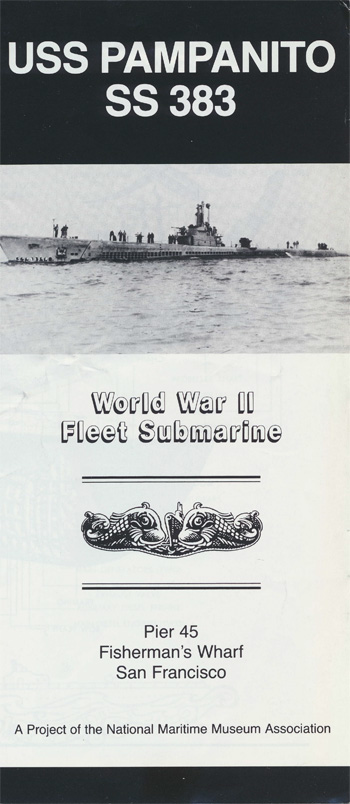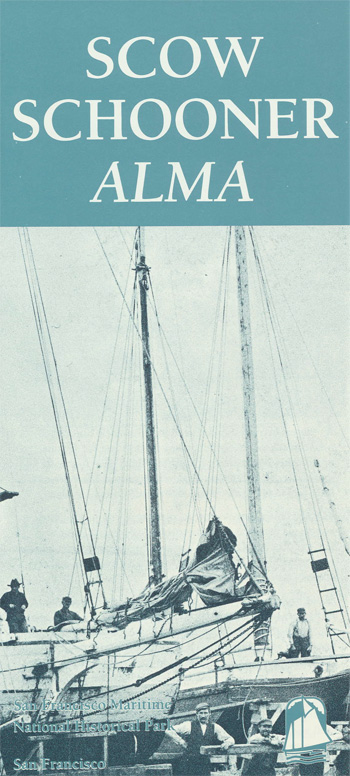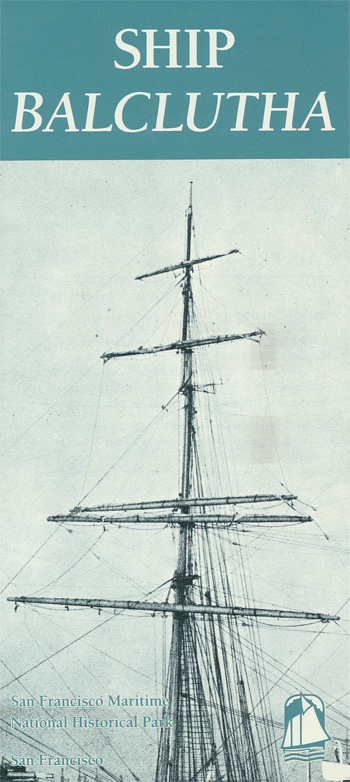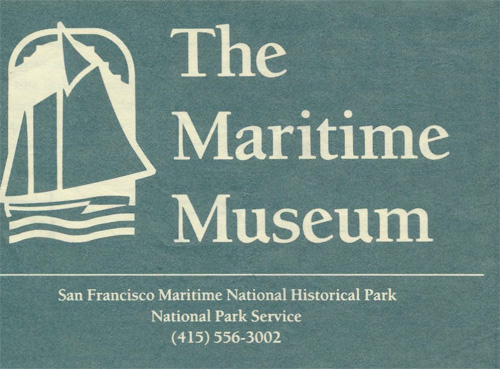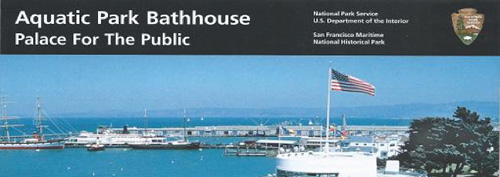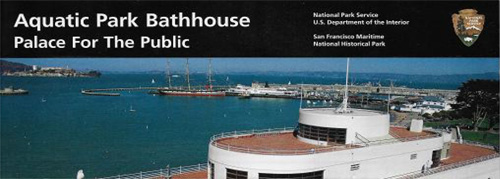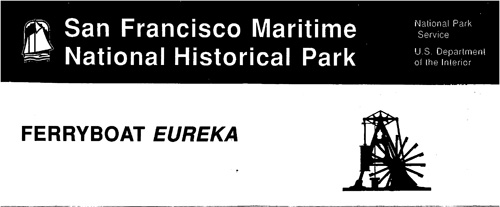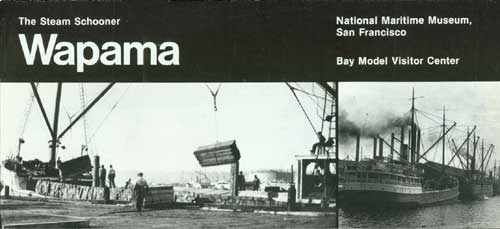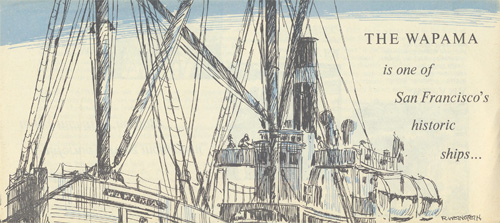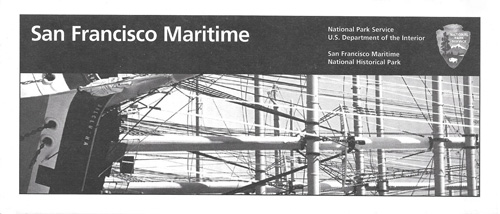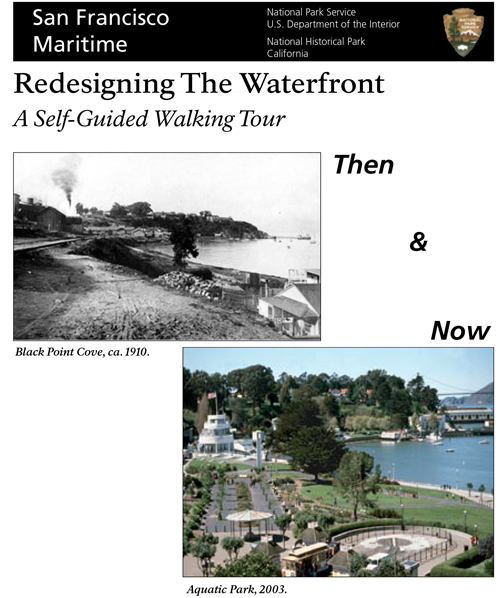|
San Francisco Maritime National Historical Park California |
 |
 NPS photo | |
At San Francisco Maritime National Historical Park you will experience the sights, sounds, and textures of the city's seafaring past. You will get to know what life was like for the people who made their living at sea. From the wooden decks of Balclutha, a squarerigger that rounded Cape Horn 17 times, duck into the cramped cabins where sailors sheltered during months at sea. In the hold of coastal schooner C. A. Thayer walk along the curving sides where freshly cleaned fish, layered with salt, were stacked to the ceiling.
Along Hyde Street Pier, park staff and volunteers mend lines, varnish brightwork, and tend puffing steam engines. Rangers lead a variety of programs, even high aloft in Balclutha's rigging. Environmental living programs bunk school children overnight on board historic vessels. And at the small-boat shop craftspeople shape and bend-on steam softened planks to repair historic boats and build replicas.
In the Maritime Museum exhibits and hands-on activities tell you about the Gold Rush, marine archeology, communications at sea, and more. The museum building, designed in Streamline Moderne style and once known as the Casino or Bathhouse, displays Works Progress Administration (WPA) murals from the 1930s. African American artist Sargent Johnson carved the stone facade.
If you're interested in pursuing maritime history in detail, Landmark Building E houses collections of artifacts, documents, vessel plans, photographs, motion picture film, books, periodicals, and oral histories.
San Francisco and the Sea
While native peoples
paddled the bay in reed canoes, European explorers charted the coastline. In
1776 the Spanish settled at the site of present-day San Francisco. Soon
afterward ships came in search of seal and sea otter furs. In the 1820s whalers
arrived, and Boston merchant ships began trading for California cowhides.
In 1849, after the discovery of gold in the Sierra Nevada foothills, the world rushed in. That year more than 750 ships arrived in San Francisco. Some fortune-seekers came on sleek, American-built clipper ships, but most sailed in on just about anything that could float. They often abandoned their vessels in the shallows. (Remains of such vessels lie today beneath the city's financial district.) "It is a city of ships, piers, and tides," wrote Chilean journalist Benjamin Vicana-Mackenna in 1852. "Large ships with railings a good distance from the beach served as residences, stores, and restaurants...."
The Gold Rush brought merchants, laborers, and craftspeople from around the world. By the 1870s California's burgeoning grain trade lured big European sailing ships such as Balclutha. Fleets of schooners, like C. A. Thayer, arrived with Douglas-fir from Puget Sound. Flat-bottomed scow schooners, like Alma, sailed up the Delta into California's Central Valley. They delivered plows and seed, sewing machines and cloth, coal and oil. And they returned stacked with jute bags of hard white wheat, well suited for long-distance shipping. On San Francisco's docks the bags were hand-loaded into the holds of sailing ships bound for Europe.
After the grain trade diminished and railroads reached the lumber mills and valleys, many sailing vessels were abandoned or scrapped. The lucky ones were refitted for other careers. Balclutha and C. A. Thayer went on to supply Alaska fisheries in the late 1800s and early 1900s. American intercoastal steamer traffic exploded after the Panama Canal opened in 1914. West Coast shipyards opened to meet the demands of World Wars I and II.
For a time, a dazzling array of vessels crowded the San Francisco waterfront: great sailing ships, coastal passenger steamers, military craft, and local working boats. One by one, these ships became obsolete but nonetheless treasured for their beauty and for the stories they told. In 1988 Congress established San Francisco Maritime National Historical Park to protect and preserve our maritime past.
The Historic Vessels of Hyde Street Pier
Hyde Street Pier was built in 1922 for automobile ferries between San Francisco and Sausalito. The ferry route was part of U.S. 101 until the Golden Gate Bridge opened in 1937.
Today the pier and a number of the historic vessels moored here are open to visitors. Five vessels—Alma, Balclutha, Eureka, Hercules, and C. A. Thayer—are designated National Historic Landmarks. The pier also has a variety of maritime structures and exhibits. We welcome you aboard!
Alma The last San Francisco Bay scow schooner still afloat, Alma is the park's sailing ambassador, welcomed by port cities around the bay. Flat-bottomed scows like this carried bulk cargoes—hay, grain, and fertilizer—between delta farm communities and San Francisco.
Balclutha Walk up this ship's gangway and back to the 19th century. This square-rigger was built in Scotland to haul California wheat to Europe. Crew lived on board for months at a time during the treacherous voyage around Cape Horn. Compare the sailors' bunks in the forecastle to the Captain's quarters aft. Like the rest of the park's fleet, Balclutha survived because it kept working after other vessels of its class were scuttled.
C. A. Thayer This schooner is representative of hundreds that sailed the Pacific Coast. In Puget Sound ports eight-man crews piled the deck high with Douglas fir, the raw material for California's cities in the early 20th century. Thayer later carried small boats and fishing crews to Alaska for salmon and cod.
Eppleton Hall This sturdy little tugboat from England crossed the Atlantic under its own power in 1969. "Eppie" recalls the earliest days of steam navigation on the bay.
Eureka Originally built to ferry trains across the bay, this vessel was rebuilt in 1922 to serve passengers and automobiles. Don't miss the classic autos and trucks displayed on the lower deck.
Hercules Imagine a slow trip down the coast, towing a huge log raft and fishing off the stern for your dinner. This workhorse towed big ships out to sea, pushed railroad car barges across the bay, and towed huge lock structures to build the Panama Canal.
Small Craft The park's boat shop restores these often unheralded, everyday craft used for work and pleasure on the bay: feluccas Montereys, and yachts. The shop also offers classes for the public.
Archives and Collections
Artifacts, scrapbooks, sailors' crafts, and shipboard machinery—all tell personal stories about the men and women who created and used them. In the Maritime Museum measure a sheet of hull plating between your thumb and forefinger, turn a ship's wheel, and look at surprisingly domestic scenes of family life at sea. For visitors who want to learn more, thousands of books, photographs, and documents make the Maritime Library the first stop for West Coast maritime history research. The Maritime Library is located at Fort Mason Center, Building E. Open for research five days a week, the library provides access to the park's photographic and document collections.
Planning Your Visit
 (click for larger map) |
San Francisco Maritime National Historical Park is located just west of Fisherman's Wharf. The area is served by public transit; visit the website www.sfmuni.com. Paid parking is available nearby. The park is open daily, year-round. The visitor center, museum, and pier are closed on Thanksgiving, December 25, and January 1.
Visitor Center Located in the historic Haslett Warehouse, home of the Argonaut Hotel, the visitor center has orientation information to help you plan your visit. Exhibits tell the stories of men and women who worked on the waterfront and at sea. 9:30 a.m. to 5 p.m. with extended summer hours. No admission fee.
Maritime Museum This white ship-like building is filled with exhibits documenting the history of West Coast seafaring, the California Gold Rush, the Cape Horn sailing vessels, the Pacific whaling industry, and steam technology. The "Sparks, Waves, and Wizards" exhibit tells the history of maritime communication. Located in the Sala Burton Building at the foot of Polk Street (900 Beach Street). 10 a.m. to 5 p.m. No admission fee.
Hyde Street Pier One block east of the maritime museum, Hyde Street Pier displays historic steam and sailing vessels as well as other maritime exhibits and interpretive demonstrations. No fee for pier; admission charged to board vessels.
Aquatic Park Stroll through the gardens, along the waterfront, or out on Municipal Pier. Watch the cable cars turn around. Visit one of the city's few urban beaches. Spot boats and birds in the bay—and even swimmers in the lagoon.
USS Pampanito Pier 45. Restored, maintained, and operated by the San Francisco Maritime National Park Association, this World War II fleet submarine made long-range cruises in the Pacific. Open daily. Admission is charged.
Source: NPS Brochure (2004)
|
Establishment San Francisco Maritime National Historical Park — June 27, 1988 |
For More Information Please Visit The  OFFICIAL NPS WEBSITE |
Brochures ◆ Site Bulletins ◆ Trading Cards

Documents
A Dream of Seven Decades: San Francisco's Aquatic Park (James P. Delgado, excerpt from California History 64:4, Fall 1985)
Along the Shores of Time: Submerged Historic and Indigenous Resources in the Pacific Rim Region Proceedings from an International and Interdisciplinary Conference (Roger E. Kelly and Gary Franklin, eds., 2001)
Beyond the Golden Gate: A Maritime History of California, Historic Resources Study, The San Francisco Maritime National Historical Park (Timothy G. Lynch, May 2012)
Cultural Landscape Report: Aquatic Park, San Francisco Maritime National Historical Park (2010)
Foundation Document, San Francisco Maritime National Historical Park, California (March 2016)
Foundation Document Overview, San Francisco Maritime National Historical Park, California (March 2016)
General Management Plan: San Francisco Maritime National Historical Park, California (October 1997)
Historic Furnishings Report: Ship Balclutha Draft (Ted Miles, 1994)
Historic Structure Report: Schooner C.A. Thayer (Architectural Resources Group, June 2022 )
Historic Structure Report: Steam Schooner Wapama Draft (Tri-Coastal Marine, Inc., 1986)
Historic Structure Report: Tugboat Hercules, San Francisco Maritime National Historical Park (Tri-Coastal Marine, Inc., 1990)
Inventory of Coastal Engineering Projects in San Francisco Maritime National Historical Park NPS Natural Resource Technical Report NPS/NRSS/GRD/NRTR—2013/735 (Kate Dallas, Michael Berry and Peter Ruggiero, May 2013)
Junior Ranger Program (Ages 5-8), San Francisco Maritime National Historical Park (Date Unknown; for reference purposes only)
Junior Ranger Program (Ages 9-12), San Francisco Maritime National Historical Park (Date Unknown; for reference purposes only)
Long-Range Interpretive Plan, San Francisco Maritime National Historical Park (March 2000)
National Register of Historic Places Nomination Forms
Scow Schooner Alma (Allen W. Welts, October 25, 1974)
s/v Balclutha (Star of Alaska) (Richard M. Griffith, Jr., October 6, 1975)
C. A. Thayer (Schooner) (James P. Delgado and Gordon S. Chappell, June 30, 1978)
Eureka (Ukiah) (Allen W. Welts, February 28, 1973)
Tugboat Hercules (Allen W. Welts, October 1, 1974)
Ship King Philip, Schooner Reporter (James P. Delgado, November 15, 1985)
Lewis Ark (James P. Delgado and Gordon S. Chappell, October 4, 1978)
Tubbs Cordage Company Office Building (James P. Delgado and Gordon S. Chappell, October 6, 1978)
Steam Schooner Wapama (Tongass) (Allen W. Welts, rev. February 28, 1973; James P. Delgado and Gordon S. Chappell, December 17, 1982)
Park Newspaper (Maritime News)
2004: April-May-June • July-August-September • October-November-December
2005: January-February-March • April-May-June • July-August-September • October-November-December
2006: January-February-March • April-May-June • June-July-August • September-October-November • December 2006-January-February 2007
2007: January-February-March • June-July-August • September-October-November • December 2007-January-February 2008
2008: January-February-March • June-July-August • September-October-November • December 2008-January-February 2009
2009: January-February-March • June-July-August • September-October-November • December 2009-January-February 2010
2010: January-February-March • June-July-August • September-October-November • December 2010-January-February 2011
2011: January-February-March • June-July-August • September-October-November • December 2011-January-February 2012
2012: January-February-March • June-July-August • September-October-November • December 2012-January-February 2013
2013: January-February-March • June-July-August
Rehabilitate 1895 National Historic Landmark Schooner C.A. Thayer Environmental Assessment (July 5, 2002)
Special Report: Haslett Warehouse, San Francisco, California (Jerome Greene, 1974)
Steam Schooner Wapama: Photographs, Written Historical and Descriptive Data HAER No. CA-67 (2001)
San Francisco Maritime National Historical Park
Books

safr/index.htm
Last Updated: 01-Aug-2024
